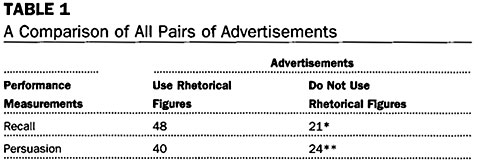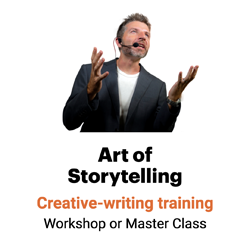We pay attention to and remember puns, alliteration
A hand shoots up in my Make Your Copy More Creative workshop.

“But,” the communicator says, “don’t you risk confusing people with wordplay?”
Well … yes, you do. And that’s part of the point.
When readers encounter wordplay, they first try on the literal meaning of the words. When that doesn’t work, they seek alternative meanings.
Because readers spend extra time and attention on wordplay (PDF), they understand it more fully and remember it longer.

And that’s just one benefit of wordplay. Among others:
1. Wordplay grabs attention.
Meet your Broca area — a small part of your brain located in the frontal lobe of your left cerebral hemisphere. It’s your body’s language control center.
You can thank your Broca for helping you sort through the 5,000 messages you get every day — that’s nearly 2 million a year — PLUS social media, without having to process every word.
Remember that old Far Side cartoon by Gary Larson?
What we say to dogs: “Okay, Ginger! I’ve had it! You stay out of the garbage! Understand, Ginger? Stay out of the garbage, or else!
What dogs hear: “Blah blah Ginger blah blah blah blah blah blah Ginger blah blah blah blah blah.”
Your Broca is Ginger: not paying much attention to most messages — until something interesting comes along.
Well-worn phrases like “a rough day” are so familiar they don’t activate your Broca. Plain old splainin’ doesn’t do anything for it either. Why even bother decoding those words into meaning?
But puns and other wordplay activate Broca’s area.
Want folks to pay attention to your message (PDF)? Activate their Brocas with wordplay.
2. Wordplay is more fun.
Figuring out a pun is a little like figuring out a riddle or solving The New York Times crossword puzzle. It’s fun! It also feels good to figure out a twist of phrase.
Call it “the pleasure of the text,” the reward that readers get from figuring out figurative language. When readers discover the hidden meaning behind your wordplay, they congratulate themselves on their astuteness.
3. Wordplay feels good.
And when that twist of phrase tickles your readers’ funny bones, their brains deliver a dose of dopamine. Then, if you really crack up, neurons called spindle cells spread the joy across the brain.
4. Wordplay changes minds.
The good feeling readers get from figuring out puns and other plays on words also helps create a positive attitude toward your message. That puts readers in an agreeable mood and may even open their minds to your message.
In fact, ads using rhetorical techniques were 166% more likely to persuade readers (PDF) than ads that did not, according to two researchers from the California State University at Sacramento. They correlated ads with figurative language in Which Ad Pulled Best against results.
Move readers to act

5. Wordplay is more memorable.
“Words that roll off the tongue stay in the brain,” says Sam Horn, author of Pop!: Stand Out in Any Crowd.
Indeed.
Those two Sac State researchers also found that ads using rhetorical techniques were 229% more likely to be remembered than ads that did not.
And, in another study, four researchers had half their participants read alliterative passages and other half read plain-old passages. Those who read the alliterative passages remembered more of what they’d read than the control group.
Play to win.
Want readers to pay attention to, enjoy, remember and act on your messages? Try wordplay.
___
Sources: “Awesome Alliteration Analysis Posits Power Of Poetry And Prose,” Scientific Blogging, July 30, 2008
Cristen Conger, “Is there a scientific formula for funny?” How Stuff Works, June 7, 2011
Francisco Javier Díaz-Pérez, “The use of wordplay in advertisements published in men’s magazines: a comparative study in the UK and Spain” (PDF), Estudios Ingleses de la Universidad Complutense, 2012, vol. 20, pp. 11-36
David Glen Mick and Edward F. McQuarrie, “Figures of Rhetoric in Advertising Language” (PDF), Journal Of Consumer Research, March 1996
Stefan Kjerkegaard, “Seven Days Without a Pun Makes One Weak: Two Functions of Wordplay in Literature and Literary Theory,” Journal of Literature, Language and Linguistics, Volume 3, Issue 1, 2011
Gail Tom and Anmarie Eves, “The Use of Rhetorical Devices in Advertising,” Journal of Advertising Research, July-August 1999
Leo Widrich, “The Science of Storytelling,” Daily Good, Feb. 21, 2013

Leave a Reply